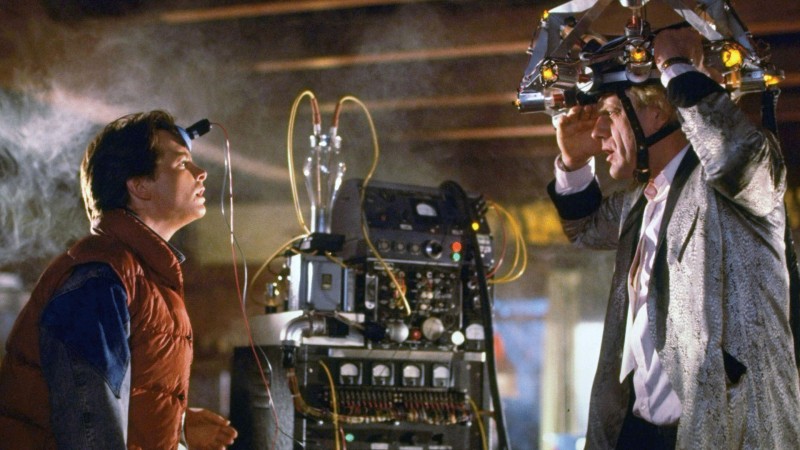Back to the Future: Fiction vs Reality
21st October 2015, an historical day for every nerd worthy of respect. The Back to the Future day has arrived. 30 years has passed since Back to the Future (1985) and Back to the Future Part II (1989), have powerfully affirmed theirselves in the heart of all fans of science fiction movies around the world, getting people excited following the futuristic adventures of Doc Brown and Marty McFly, two iconic characters that have marked the collective imagination worldwide. Who among us hasn’t dreamed at least once, of drive a flying car, wear auto-lacing shoes or running around the city with a brand new hoverboard? The most venal of us, with no doubts, have surely dreamed of owning a Grays Sports Almanac, to bet on all the right results of these years and become millionaires.
Differences between movie and reality
Let’s try to pull a couple of sums. Some predictions in the movie have turned into reality, some were even exceeded. Ok, maybe the Nike Mag has no auto-lacing feature, there are no auto-adjusting or auto-drying jackets, and fortunately, we’re not reduced eating dehydrated pizza (i dare not image the taste), but we have 3D movies, we can make a payment using our smartphone, we have video calls, facial recognition, bionic implants, also slowly we are saying goodbye to CD/DVD and other physical media. All these things, laid down by Back to the Future, have been realized or are going to be realized, indeed, in some cases, we overcame.
Authors imagined faxes anywhere, instead we can communicate using social networks, making video calls and instant messages from every place. In addition to 3D movies, we also have 3D video games and virtual reality peripherals as Oculus Rift or Steam VR; and what about the holographic technology?
Another beautiful and exhilarating foresight, is that of Jaws 19 in the theaters. Ok, rest assured, there’s no Jaws 19, but can you deny the rampant and seemingly unstoppable phenomenon of sequels in movies and video games? Well, not bad for a movie made in an historical period where Nintendo was the top of technology and the World Wide Web had not yet been invented.
Think for a moment of the augmented reality glasses that Doc Brown wears in the second movie; very similar to Google Glass, aren’t they? Yet we know that Google Glass project has been a resounding flop. Google wanted to make the future available today, but hadn’t come to terms with real life issues: high price, reluctance of users to “wear” a device all the day and the privacy problem.
Something similar applies to flying cars: in fact they exist, but are so expensive and drive them is not very easy. A pilot, to obtain a flying license, has to study and make practice for a very long time, it’s not how to make coffee in the morning. Also, thing about what would happen if all common people could fly: there would be chaos and destruction everywhere. While remaining with the wheels firmly planted on the road, today, car accidents cause mass casualties. If a completely drunk young man, dedicated to the Italian “dolce vita”, went to crash directly in the Sistine Chapel in Rome: it would be a tragedy. And think, finally, how would be easier to organize terroristic attacks.
Are we ready for the future?
Deep down, we’re not yet ready for many of the technological innovations that we imagined, we want only dream of having them. And that’s why there are movies and video games: to transform all our dreams and our impassable desires, into reality.
One day we’ll definitely can see greater stuff than we’d see on Back to the Future, but when this will happen, people will be ready, because culture and civilization will be developed enough to sustain it. Cloning, human genome manipulation, artificial organs and limbs, and above all, artificial intelligence: these are the greatest challenges facing humanity in the coming centuries; changes still hindered by capitalism, differences between social classes, religious and ethical dilemmas, pollution, global warming, extreme poverty in poor countries.
According to Unicef, before the end of 2015, about six million children will die of poverty or to causes that could have been foreseen and eliminated. According to Climate Central, global warming will cause long periods of drought and an increase in sea level that will start to flood populated cities like New York since the year 2200.
How will the future be?
The future will be bright. We, unfortunately, are the inhabitants of a land placed into a transition period that goes from the modern era, which saw the advent of industrialization and democracy, to the “future” age, which has already started with the advent of information technology and global networking (Internet), but it’s still early in its history and may be preceded by other religious clashes or class wars, as well as other ethical and moral earthquakes.
While the future is appearing before our eyes, we can go back to the future, indeed, in the past, enjoying again the Back to the Future trilogy, or playing Back to the Future: The Game by Telltale Games, continuing to dream and hoping in a future full of surprises and innovations, which will raise the mankind towards peaks that today we can’t even imagine.
